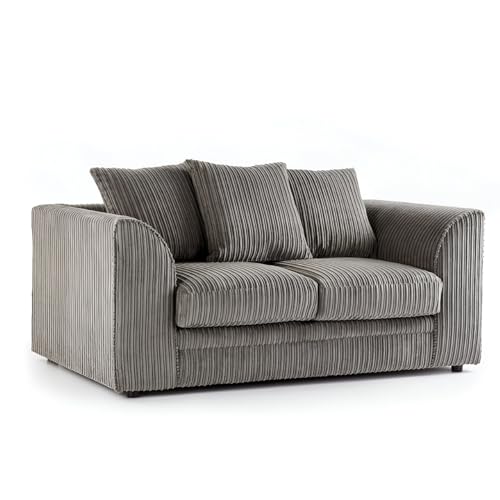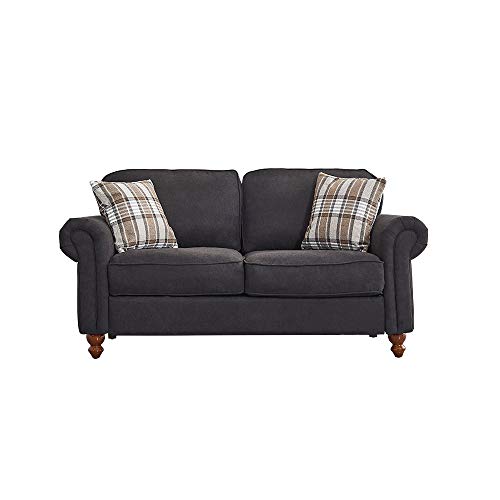Guide To 2 Seater Leather And Fabric Sofa: The Intermediate Guide In 2 Seater Leather And Fabric Sofa
작성자 정보
- Saundra 작성
- 작성일
본문
 Choosing Between a 2 Seater Leather and Fabric Sofa
Choosing Between a 2 Seater Leather and Fabric SofaWhen you're in the market for a new sofa it isn't easy to decide between fabric or leather. This is especially true if you don't have much furniture experience.
 If you have children or live in an apartment The leather option might be right for you. It is easy to maintain and looks gorgeous in most homes.
If you have children or live in an apartment The leather option might be right for you. It is easy to maintain and looks gorgeous in most homes.Comfort
A sofa is the focal feature of many people's living areas and is a major purchase. You want one that is comfortable to sit for hours, looks great, fits with your room style and can endure the test of time. Deciding between leather or fabric can be confusing It is crucial to assess your priorities, lifestyle and budget before making a choice.
Leather is a premium, luxurious material that oozes class and luxury in any home. It is tough, stain resistant, resistant to children and pets, and will last for a long time if given proper care. It can be costly initially and may require regular conditioning to avoid cracking or peeling.
Fabric sofas are available in a broad range of styles, colours and fabrics. They are often cheaper than leather ones. They are also more comfortable and more inviting, and can be "broken in" right from the beginning. They are susceptible to dust mites and pet hairs, and may require frequent cleaning. However, thanks to advances in technology and performance fabrics there are now hypoallergenic options to choose from.
The life-span of a fabric sofa will depend on the quality of the fabric However, the majority of fabrics can expect to last for 15 years if properly maintained. Regular vacuuming and deep cleaning aid in keeping the 2 seater fabric sofa clean and free of odours and stains. Like leather, they can be susceptible to sagging and flattening over time. In addition, many couches made of Fabric 2 seater sofas sale have been treated with chemical to make them stain-resistant as well as flame-resistant. These chemicals can release volatile organic compounds that can alter indoor air quality and cause allergies.
Durability
We usually choose sofas made of fabrics that are very robust, particularly if we have pets or children. You don't want to invest much upfront and then end up feeling remorseful about buying after the first spill or claws that are crowbarred. Similarly you shouldn't buy something that's cheap but can't withstand daily use.
Leather, however is extremely durable and has an incredible strength for tears. It also lasts up to four times longer than fabric, and it is naturally resistant to cracking, fade and flaking over time. It can be treated to replenish its natural oils and make it appear new.
Fabrics are a less expensive option and come in a variety of colours patterns, patterns, and textures to match any interior design scheme. Fabrics are less difficult to clean and can endure some wear and tear. However, they do fade with time and are more vulnerable to moisture.
Microfiber is a great choice for durability and comes in a variety of colors, however it's not as tough as genuine leather and may not be able to withstand scratches. It is nevertheless a great option for families because of its resistance to stains and spills. It's also easy to clean with a damp cloth.
Suede is more difficult to clean and repair than 2 seater leather and fabric sofa. It also can lose its shape if not maintained and can feel very rough to the roughness of the. It is also a very thin material, so it might not be as durable as cowhide and sheepskin leather.
Allergens
Fabrics can have a major impact on allergies. It is important to understand the way different options work. Fabrics are prone to retaining allergens such as dust mites and pet dander which can cause symptoms such as asthma, hay fever, eczema and rhinitis. This is because these fabrics create the perfect environment to allow them to grow.
However, leather, unlike other materials is not a source of allergens and offers a constant level of comfort, regardless of the season. It can also cause allergic dermatitis in those with contact dermatitis, or are sensitive to the chemicals used in tanning. To prevent skin reactions, it's essential to use products made from vegetable oils and to maintain a regular routine for your skin.
Both leather and fabric sofas are durable, but the material you select will have a significant impact on how well your couch holds up to wear. A good quality fabric will stand up to the demands of daily usage without fading or sagging and will resist spills and body oils easily. Modern sofas have stain-resistant treatment options that make cleaning simple.
It is not possible completely to prevent an allergic reaction to the leather in your sofa, but you can help to avoid allergens by keeping an lint roller in the vicinity and regularly vacuum your living space. This will help in reducing the amount of dirt, pet hair and dust mites that build up on your sofa. If you are still experiencing allergies, try replacing your sofa for a more allergy-friendly model. For example, a leather sofa made of vinyl or synthetic leather is less likely to trap dust mites and pet dander and can help you breathe more easily.
Scratches
When you are buying a leather sofa, you need to consider how much wear and tear you can anticipate from it. The amount of time a sofa is expected to last is contingent on the finish, colour and leather quality. You also want to ensure that it is sturdy enough to stand up to spills and other messes. This can be accomplished by choosing a couch with a solid hardwood frame and high-density foam cushions.
Leather can be damaged for a number of reasons, such as stretching, marking territory or reliving stress. Scratches are of varying severity. They vary from minor surface scratches to deep cuts or punctures. Small scratches can be repaired with a leather conditioner. This will help to restore the equilibrium of moisture and oil in the leather, which will prevent drying out and cracking. Deep cuts and scratches may require a different approach, depending on the amount of damage.
If you have cats, it is a good idea to trim their nails regularly to help to prevent scratching on your couch. You can also retrain your cat's scratching behavior by providing them with alternatives scratching surfaces, like sisal rope or cardboard. Another option is to apply a pet-safe furniture polish which can be applied using an abrasive cloth to the damaged area.
It is essential to clean your leather couch frequently and keep it away from direct sunlight and heat, as they can dry it out. This can cause it to crack, which is usually difficult to repair and frequently requires the reupholstery. Use a leather conditioner in order to keep the leather supple.
Smell
Leather couches are known to smell different from fabric. It's because leather is porous, and absorbs odors such as smoke, body odors or food. The good news is that odors will usually disappear over time, particularly when you use a non-toxic, fragrance free cleaner.
If the smell is overwhelming, it could mean that something is wrong with the foam. This is typically caused by the chemical off-gassing that occurs in polyurethane that is derived from petroleum. If you're worried about this, look for couches made with CertiPUR-US certified latex foams or natural latex.
A second way to identify faux leather is to look for bumps or texture on the back of a sofa. This is a sign that the leather is bonded and not genuine top grain. You can also conduct an examination by laying the sofa to one side and observing any exposed upholstery backing. If it is see any, it's likely a synthetic material, such as polyurethane or polyester. These will have a distinct smell than real leather.
Regularly cleaning your leather sofa will help to keep it looking and smelling great. This will keep it looking its best and smelling great as well as preventing it from becoming stiff or cracking over time. Begin by vacuuming and dusting the couch before wiping it down with a dry cloth and baking soda (a good natural way to remove odors). You should do this at least once every two weeks or more to get rid of dust and dirt accumulation. Apply leather conditioner to preserve the color and texture of your sofa.
관련자료
-
이전
-
다음
댓글 0
등록된 댓글이 없습니다.
